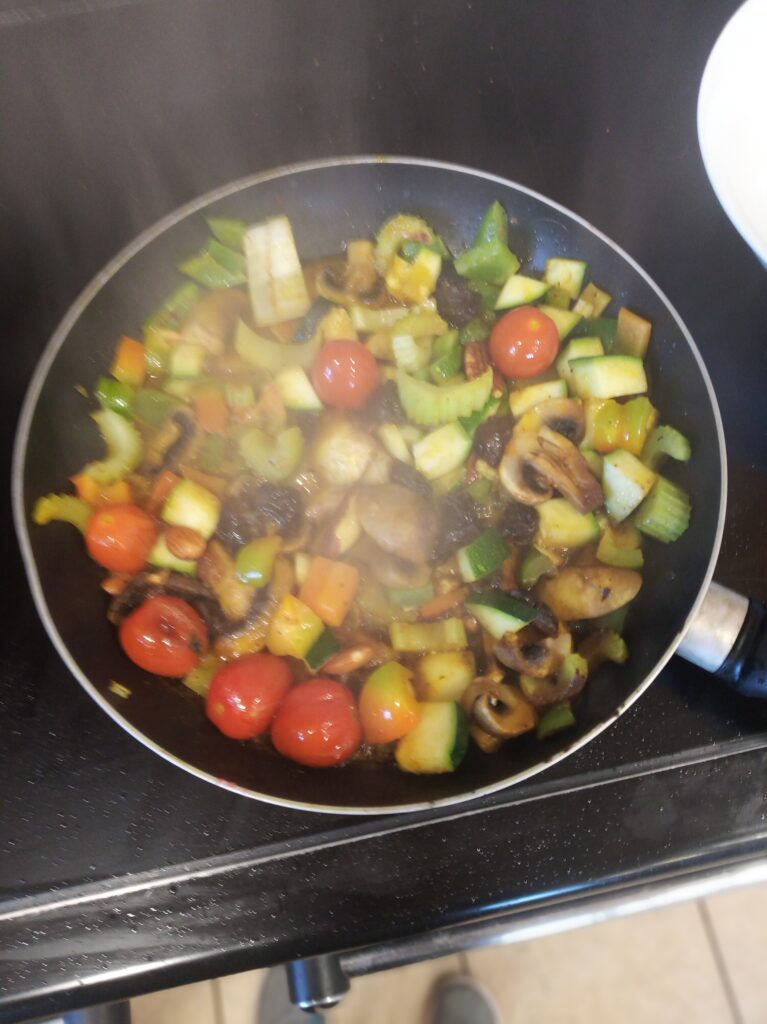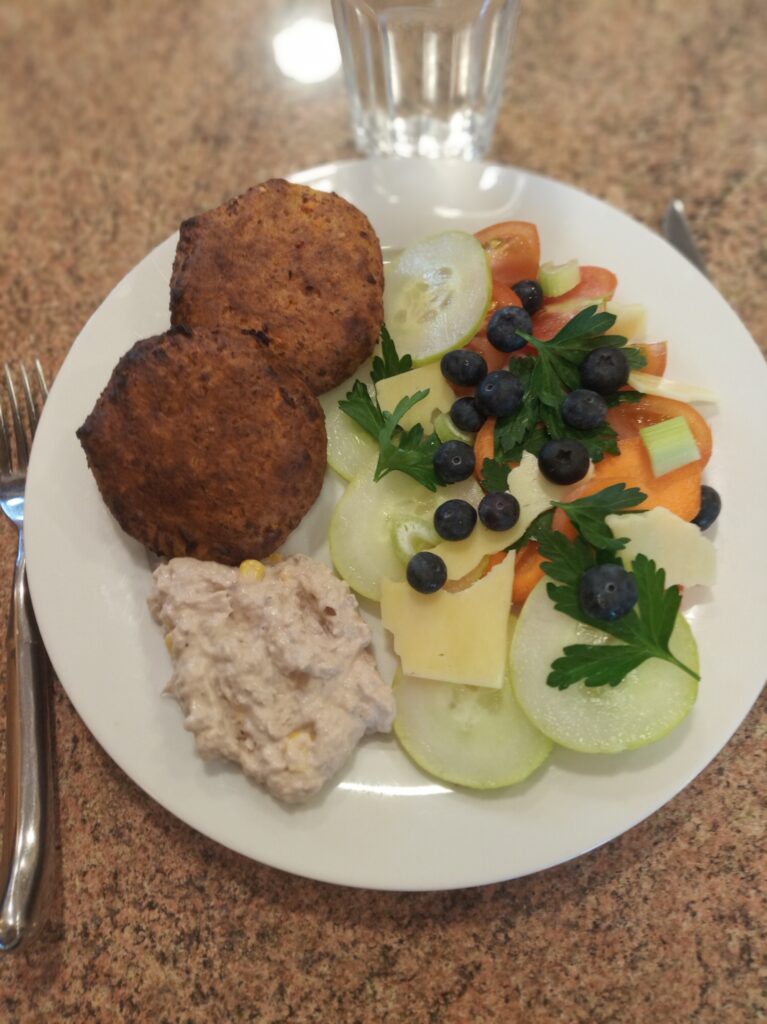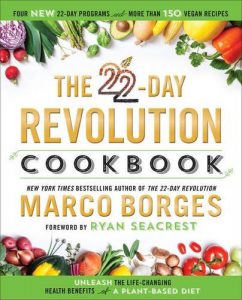The Forks Over Knives Plan: How to Transition to the Life-Saving, Whole-Food, Plant-Based Diet
Are you curious about a whole-food, plant-based diet?
When people use the term “plant foods” and/or “plant based” they mean the whole food or some minimally processed version of it, or a meal prepared from those foods.
Guacamole is an example of a plant food that is minimally processed or prepared. Hummus, applesauce, salsa, peanut butter, oatmeal, and vegetable broth would be other examples.
Condiments such as mustard, hot sauce, vinegars, and soy sauce are also generally accepted as within the scope of “minimally processed”.
Corn tortillas, whole-grain breads (e.g. whole-wheat bread), and pastas (e.g. whole-wheat spaghetti or brown rice noodles) are slightly more processed than guacamole, hummus, etc., but these items are still generally accepted within the definition of “plant foods” and are included by most people following a “plant based diet.”
When talking specifically about diet/dietary choices “plant foods” refers to any edible food that isn’t from an animal in any way.

This is glorious at any time of year. The bright, vibrant colours make it a great summer dish but, as it is served warm and bursting with flavour, it is equally satisfying in the cooler months. SERVES 1 1 courgette, sliced into rounds 1 large red pepper, chopped into bite-sized pieces 1 large red onion, halved then sliced 4–5 mushrooms, sliced olive oil ½ tsp garlic granules ½ tsp smoked paprika sea salt and freshly ground black pepper leaves from a small bunch of curly parsley, coarsely chopped.
Preheat the oven to 200°C/400°F/gas mark 6. Place the vegetables in a roasting tin, drizzle with a little olive oil and toss well. Sprinkle over the garlic granules and paprika, season to taste with salt and pepper and toss well again. Place at the top of the hot oven, and roast for 20–25 minutes, stirring frequently. Place the roasted vegetables on to a serving plate, sprinkle over the parsley.
Meat, bone, milk, eggs, or something derived from those items such as butter or gelatin is not considered a “plant food” or “plant-based”.
Diets containing animal based protein are associated with a huge disease burden, far more than most people realize.
Excess protein increases carcinogenic activity and is correlated with the health risks for all chronic diseases including coronary artery diseases and diabetes epidemics.
The RDA for protein is 10% of calories, though most tend to eat twice that. The only way to over-consume protein is through excess animal food consumption or the use of isolated protein in processed foods.
You get protein every time you eat a plant food. Fun fact: Spinach and kale have nearly twice as much protein as beef, calorie for calorie.
Our protein obsessed culture forgets that protein in meat is built from plants. That’s right! Most farm animals are herbivores (plant eaters) so when YOU eat the plants yourself, you’re effectively cutting out the middle man.
Plant proteins (including those in kale) are not “incomplete” or missing amino acids, which are two myths you’ve probably heard.
Your body pulls all the necessary building blocks (amino acids) it needs from ALL the foods you eat, even if you don’t eat them at the same time or at the same meal.
Animal foods have no fiber, while whole plant foods are packed with fiber, which fill you up, keep you regular, and regulate nutrients into the body.
Contrary to popular belief dairy consumption is not necessary for bone health and is associated with autoimmune diseases, diabetes, and cancers of the prostate and breast.
Dairy proteins promote growth hormones which increase tumor growth. Worried about getting enough calcium for strong bones? You can get plenty without consuming dairy.
There is a correlation between refined foods and disease – sweets, pastries and processed pastas lack their original fiber, vitamins and minerals.
These processed foods convert to sugars in the blood, increasing the risk for insulin resistance, colon cancer, vascular disease and weight gain.
Health Benefits Of A Plant-Based Diet For Diabetics
Eating a plant-based diet — rich in fruits, vegetables, whole grains and legumes — can help slow or prevent various processes of disease that begin long before diagnosis.
Plant-based foods contain a complex mix of useful chemicals and fibre that, when consumed, work in synergy to lower oxidative stress, dampen inflammation, target your microbiome (by feeding the friendly microbes) and lower insulin resistance.
Adopting a plant-based diet doesn’t mean you have to become a vegan or vegetarian, but it does mean consuming a variety of vegetables, legumes, unrefined grains, nuts and seeds, and whole fruits.
The scientific evidence that demonstrates and supports the benefits of a plant-based diet is growing all the time, and the most dramatic aspect is that the effects not only prevent people from getting sick but, for certain serious conditions, the food they eat can also make them well.
People eat a lot of potatoes in Ireland especially in Kilkenny where I live.They enjoy floury dry potatoes instead of watery ones.
Watery potatoes arent very nice I dont like the taste of them neither does my husband Brendan!
See below a lovely picture of a field of potatoes near my house,I took this picture because it made me happy!

Making people well is not something that medication for chronic disease has ever accomplished, and perhaps it never will. This is not for lack of effort on the part of drug developers or doctors, but the medications for chronic disease manage symptoms rather than treat the cause of the illness.
Many people who switch to a whole food, plant-based diet are highly motivated to continue because suddenly, perhaps for the first time in a long while, they feel good!
For heart disease and type 2 diabetes, there are countless examples of individuals who, by changing their diet, have been able to reduce or discontinue their medications under their doctor’s supervision.
This information has begun to permeate the field of medicine, as increasingly more doctors now support plant-based diets as the foundation of medical treatment for a variety of chronic diseases.
Click Here For Free Ebook called”Natural Herbs 101″.Learn about growing your own herbs in the privacy of your home and using them in a variety of cooking.
Plant-based eaters, both vegetarians (who eat no meat), and vegans (who eat no animal foods at all), are more likely to be at their normal weight compared to omnivores.They’re also more likely to gain less weight over time — the nemesis of many aging adults.
Both overweight children and adults also lose weight more easily eating a plant-based diet than other types of diets, and this is true even without controlling portion size.
While most adults gain weight as they age, this is not part of healthy aging, and it doesn’t have to happen to you!
The foods that make up a plant-based diet (whole grains, legumes [peas, beans, and lentils, for example], fruits, vegetables, and limited amounts of nuts and seeds) are dense in vitamins and minerals but contain plenty of fiber (mostly indigestible complex carbohydrates—what many people call “roughage”).
Because for the most part we don’t digest fiber, it doesn’t add any calories to the diet. This is why you can fill up eating whole plant foods and still consume fewer calories.
Animal foods contain no fiber (meat and dairy), and processed foods have either had fiber removed (white flour) or had energy added in the form of fat and sugar without an increase in fiber (French fries).
So a meal of a cheeseburger, white bun, and fries packs a lot of calories but it doesn’t fill you the way a meal of brown rice, vegetables, and beans does, even though the plant meal has a lot less energy!
Most people starting to eat a whole food, plant-based diet for the first time find that excess weight just slides away, even without increasing their level of exercise.
More plant food consumption predicts lower blood pressure, improved blood lipids, lower risk of developing type 2 diabetes, and a lower risk of death from cardiovascular disease (CVD).
But it doesn’t stop there. Doctors who prescribe plant-based diets as treatment get results unmatched by medication.
A word of warning here: It’s very important to talk to your doctor before changing your diet if you are taking any medication, especially if it is a medicine that lowers your blood pressure or controls your blood sugar.
The effect of totally plant-based eating is so rapid that your blood sugar can drop to dangerously low levels if you are taking medication at the same time.
Whole food, plant-based diets are naturally low in all of the components known to promote plaque formation in the blood vessels or cause insulin receptor cell failure. These include trans fat, saturated fat, refined carbohydrates, dairy products, and red meat.
At the same time, whole food, plant-based diets are naturally rich in all the nutrients and foods that have been associated with decreased risk — more fruits and vegetables, whole grains, legumes, and nuts.
Not only can they help us avoid developing CVD and type 2 diabetes, but they also make excellent health and wellness possible as we age.
Treating type 2 diabetes with plant-based diets has now been documented in multiple studies. Within a time frame of weeks or months, type 2 diabetics are able to reduce or eliminate medication.
Just think of the improved quality of life and cost savings, as well as the blessing of not being ill!
Tips For Starting A Plant Based Diet
A whole-food, plant-based diet is centered on whole, unrefined, or minimally refined plants. It’s a diet based on fruits, vegetables, tubers, whole grains, and legumes; and it excludes or minimizes meat (including chicken and fish), dairy products, and eggs, as well as highly refined foods like bleached flour, refined sugar, and oil.
The first thing you need to do is to start limiting your intake of processed foods and meat. This may not be easy since most of these foods are high in artificial sugar, fructose corn syrup, sodium, and other chemical additives. Your body might crave these things at first, so be aware.
It’s always a brilliant idea to begin any big health- promoting shift with a visit to your trusted GP or favoured health professional. Not only can they give you the once over and declare you form fit, they often have helpful advice that’ll steer you in the right direction.
Experiment with making your favorite recipes plant-based. Just replace the meat in your favorite chili with some extra beans, make veggie burgers instead of meat burgers, or make stir-fry with tofu instead of chicken.
If things start getting stale, try a new recipe once a week. It doesn’t have to be overly fancy, but some people find that mixing it up helps to keep things interesting.
There are some great tasting plant-based recipes and plenty of awesome cookbooks around too.
The more you practice preparing your own meals, the more you’ll begin to enjoy the process. Before you know it, you’ll have a long list of favorite plant-based meals and snacks to pick from.

Educate yourself on different vegetables and fruits that you might not know much about to expand your horizons. Knowing how to prepare them properly helps too—especially if you thought you didn’t like a particular vegetable, preparing it in a new way could completely change that.
Start incorporating plant foods into your daily meals. You can also start eating fruit for a snack instead of crisps and biscuits. By gradually adding plant-based foods into your diet, you’re getting your body and mind used to it.
it’s important to eat balanced meals that include a variety of healthy foods. For example, you’ll get protein and fiber from beans; leafy greens are great sources of vitamins A, C and K.
Choose produce from all colors of the rainbow to get all the benefits. Red tomatoes have heart-healthy lycopene, blue blueberries have brain-boosting anthocyanins and orange sweet potatoes have lots of vitamin A to help keep eyes healthy. Looking for meal ideas? Try a simple well-balanced grain bowl: top brown rice, or quinoa, with beans and a mix of sautéed or roasted veggies.
Swapping out refined grains, such as white pasta and white bread, for whole grains, such as brown rice and quinoa, adds iron and B vitamins to a vegan diet (nutrients that are stripped out when the grains are refined). And, the extra fiber from whole grains will help keep you full, and may even help you lose weight.
Vegan sources of protein really are plentiful and include: tofu, tempeh, edamame (soybeans), lentils, chickpeas and beans. Nuts, like almonds and walnuts, and seeds, like sunflower and pumpkin seeds, also deliver protein.
Even though many people think it’s difficult for vegans to eat enough protein, it typically isn’t an issue for someone eating a varied diet and consciously including sources of plant-based protein.
The Institute of Medicine recommends women get 46 grams of protein daily and men 56 grams—an amount that’s pretty easy to reach.
Women would meet their daily quota with ½ cup of dry oatmeal (5 grams protein), 2 tablespoons of peanut butter (8 grams), 1/2 cup of chickpeas (5 grams),1 cup of cooked quinoa (8 grams), 24 almonds (6 grams), 1 cup of cooked whole-wheat spaghetti (7 grams) and 1/2 cup of tofu (10 grams).
Men could add just ½ cup of cooked lentils (9 grams) to meet their daily protein requirement.
Even when you eat a variety of healthy vegan foods, some nutrients will be hard to come by. DHA and EPA, two types of omega-3 fatty acids, are important for eye and brain development, as well as heart health. Omega-3 fatty acids are found mainly in fatty fish like salmon, though they can be made by the body in small amounts from ALA, another type of omega-3 that’s found in plants like flaxseed, walnuts, canola oil and soy.
Processed vegan foods often contain saturated-fat-laden palm oil and coconut oil. Stick to whole, nutritious foods that just happen to be vegan, such as carrots and hummus, nuts and dried fruit, whole-grain tortilla chips with guacamole. Indulging in vegan treats every so often is fine, but don’t justify them as “healthy” simply because they’re vegan.
FeelGoodUK Galvanised Anti Rust Polytunnel
More and more people like Brendan and myself are discovering the delights of growing fruit and vegetables. Even a medium sized garden like ours can produce a surprising amount of food – but, if you want to raise the stakes and grow better crops all year round – you should consider buying a polytunnel like we did see the above picture to view our polytunnel.
A polytunnel is a cheap, quick way of covering a growing space. Once you get one, you will never look back.Polytunnels come in a variety of shapes and sizes. Look at a few websites and always buy from a reputable supplier.
Some suppliers will put a polytunnel up for you; others will send it for you to erect yourself.Use a local supplier if they are willing to assemble it for you and you want to keep costs down.
A polytunnel should be easy for you to access, not too remote from your house, and have an adequate water supply available. It’s best to build a polytunnel on level ground in a sunny but sheltered position. Leave yourself at least a metre around the outside of the polytunnel to make it easier to build and maintain.
Choose a fine, warm weekend and allow plenty of time. Don’t rush the job. The structure should last for many years if it is put up well.
Ideally, the ground should be prepared before the tunnel is put up. This avoids damage to the polythene if you are using a Rotavator, or long-handled tools.
Dig in plenty of manure, or compost, if possible. Most crops grow best in a well-dug soil that is rich in organic material.
Leave a path up the middle of a small polytunnel; two paths might be needed for a larger one.
Create vegetable beds inside your polytunnel so that you don’t have to walk on the soil to get to your plants. Raised beds will allow you to build up the soil to improve its quality.
March or April is a good time to put up a polytunnel. It’s also a good time to start growing. You don’t have to be an experienced gardener to get some great crops in the first year of trying.
A polytunnel enables you to not only extend the range of fruit and vegetables you can grow, but also to extend their season.They provide weather protection, a sheltered place for nurturing seedlings and can enhance your enjoyment of your home garden. The plants grow more quickly and will mature in a shorter time so you will, for example, be eating French beans long before the outdoor plants have even thought of flowering.
No matter the size of your tunnel, space is limited and you have to keep things well organised. Polytunnels should be washed inside and out annually so maximum sunlight gets in. Patch holes with repair tape before they get big. Covers should last 3-5 years before they need replacing. Some of the newer polythene sheets can last up to ten years.
Some crop suggestions include tomatoes, peppers, parsnips, cabbage, lettuce, broccoli, peas& beans, herbs, beetroot, , carrots, cucumbers, melons, cauliflower, onions and strawberries.
Store-bought fruit and veg are often treated with chemicals – everything from pesticides to preservatives to keep them fresher for longer. Growing your own food – and using natural methods of pest control – ensures the very best quality organic fruit and vegetables. This obviously works out a lot cheaper than purchasing your fresh produce from an organic store, which can be extremely expensive.
There is undoubtedly something very rewarding about growing your own food. Not only do you know you are saving money and eating the freshest, healthiest food possible, you are also gaining therapeutic value from the physical act.
This Free Ebook gives more information about vegetable gardening.
Discuss your new diet with your family and friends, and share with them your reasons ‘why’. Make it clear that they don’t have to change with you, but that you would really appreciate their support.
Some habits go hand in hand with eating a plant-based diet. Take exercise as an example. If you begin to work out regularly, you may start to crave healthy food to refuel your body.
If you have any information,questions, or feedback you would like to include in this webpage.
Please email momo19@diabetessupportsite.com or leave your comments below.






I do believe people should be eating more plant based foods than we do and this is one of the reasons our society is becoming so unhealthy today.
I am slowly eating more plant food and less processed foods in my diet, I have noticed a dramatic change in my energy and my weight loss.
Hello Jeffrey,
Yes I agree a diet of minimally processed foods close to nature, predominantly plants, is decisively associated with health promotion and disease prevention.
Processed foods tend to have a long shelf life, thanks to the added sugar, salt, and preservatives within. If that wasn’t bad enough, they’re often stripped or void of nutrients.
Processed foods are often lacking in fiber and nutrients that help fill you up, which can lead to overeating later. Opt for whole foods as often as possible to fuel yourself more efficiently.A lot of the preservatives and ingredients found in processed foods can often get in the way of clear, healthy skin.
Mood can be affected as a result of eating less processed snacks. All those processed chemicals can affect mood mostly because the foods are not providing your body with adequate nutrition. When we eat a balanced diet, our body is given the nutrients it needs to function properly, and we feel more balanced and happy as a result.
When you eat a lot “bad” foods, you just feel sluggish and tired, and the last thing you feel like doing is exercising.Furthermore, your body needs protein and healthy fats to help repair and strengthen your muscles in the first place!